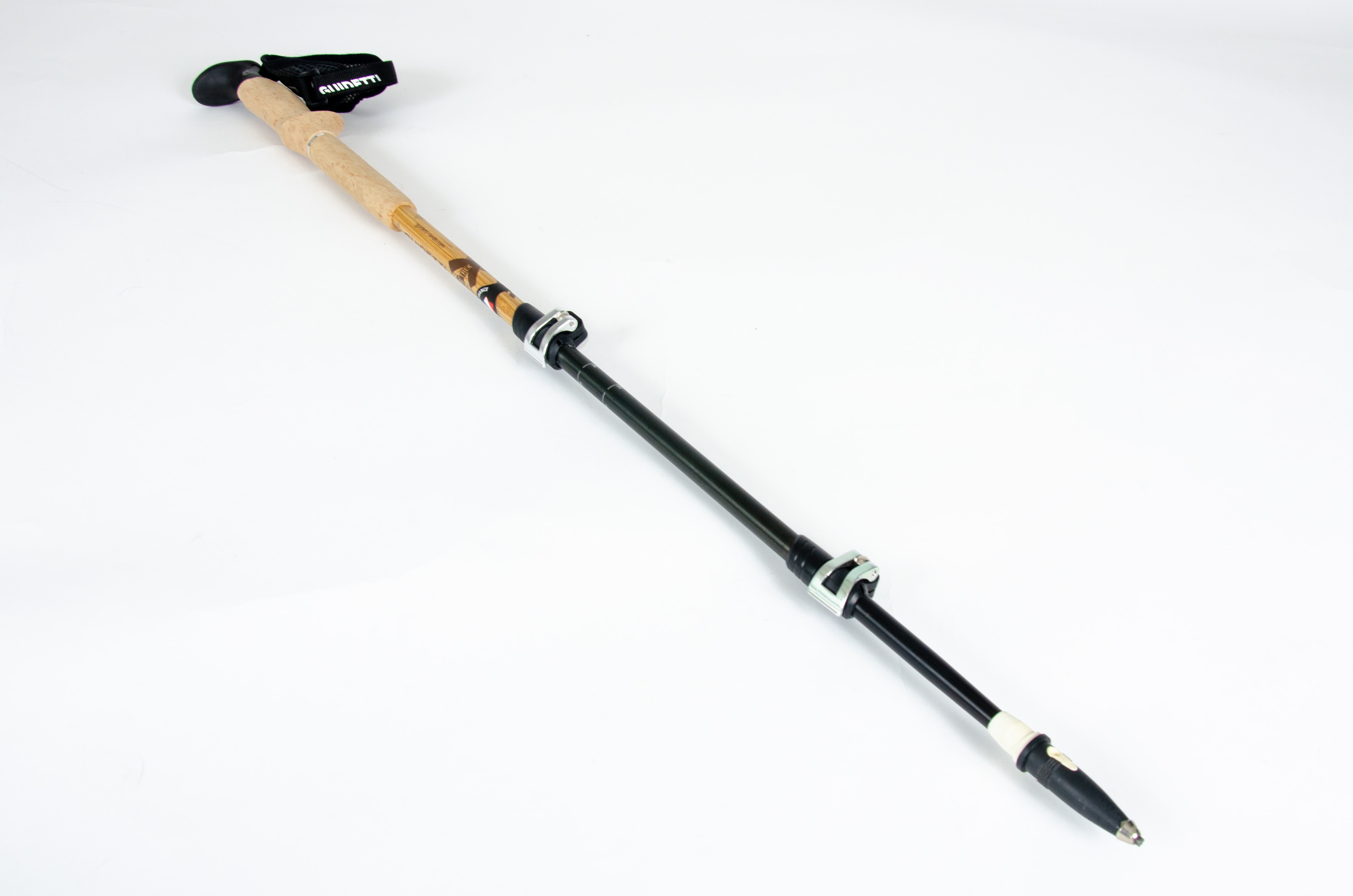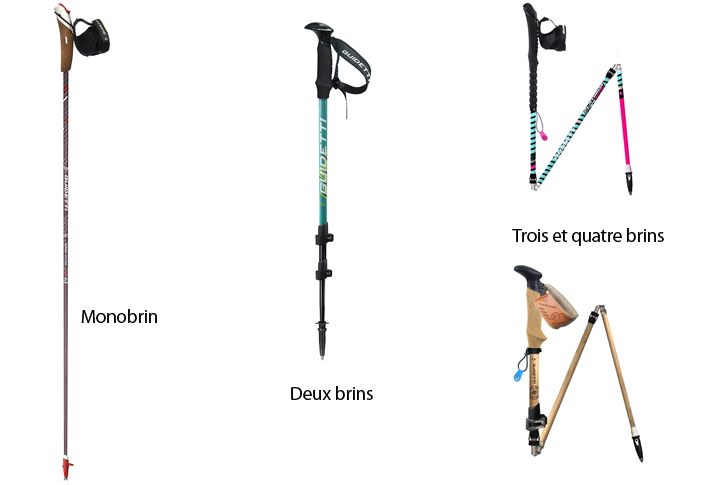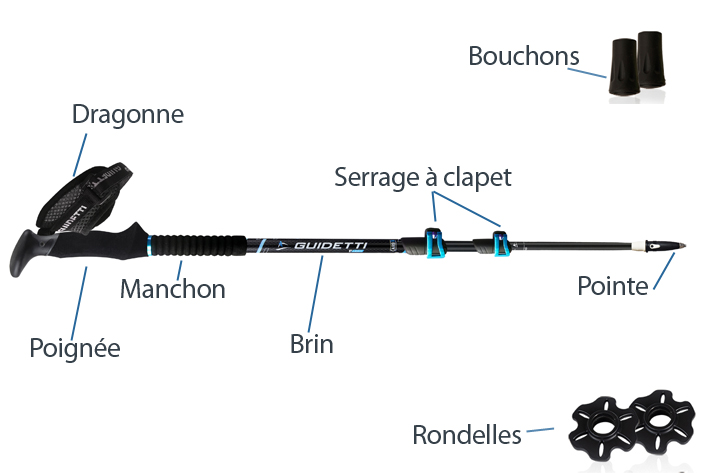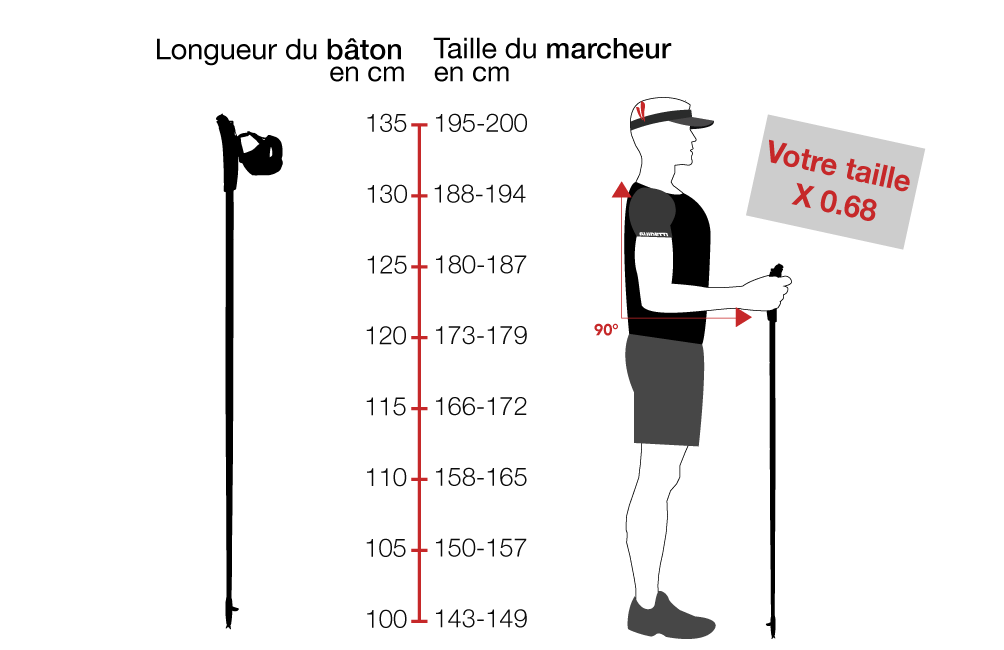Choosing the right walking poles
Like many sports equipment, walking or hiking poles have evolved significantly over the years. From the piece of wood found on the edge of the trail to the foldable carbon pole, many technologies have improved the comfort and safety of walkers.
Walking poles have become an essential companion in this activity. In particular, they reduce the impact of the backpack, relieve the joints, and strengthen the walker's balance.
Here are our tips to help you choose from the different types of poles available on the market.

Technical characteristics
Even if we might be tempted to choose our poles by color or design, several more important factors are to be taken into account: the materials, the folding system, the number of sections, the strap, etc. Let's take a closer look at these elements.
Materials
Walking poles are made of two materials:
- Carbon: a lightweight material that effectively absorbs vibrations.
- Aluminum: a robust, durable material with a good quality/price ratio.
- An aluminum/carbon mix: the perfect compromise between strength and lightness.
Number of sections
Poles can be made of one or more sections or tubes; which will define their weight, compactness and adjustability:
- Single-section: very light, flexible, robust and non-adjustable poles.
- Two-section: adjustable, compact and versatile poles.
- Three or four-section: adjustable, ultra-compact and versatile poles.
For long outings, on forest paths and different terrains, choose poles with three or more sections which have the particularity of being easy to adjust and store in your backpack.

The adjustment system
For two- or three-section poles, there are three different adjustment systems that allow you to best adjust the length of the poles to your height and the slope of the terrain:
- Screw adjustment: the sections slide and are held in position by tightening the screws at the clamping point.
- Clip adjustment: the sections also slide, but this time, it is a flap that allows you to easily lock the pole. If the flap comes loose, it will be easy to adjust it thanks to the small nut located behind the flap.
- Z-folding ("Z pole"): the folding poles deploy and fold very easily thanks to a cable system that runs through the tubes. At Guidetti, we have patented our own technology: Flashlock which allows for ultra-fast and safe deployment and combines comfort and compactness.
Good to know: Do not confuse "telescopic poles" with "folding poles". Indeed, a telescopic pole is adjustable in height but cannot fold completely, while the folding pole is very compact but cannot necessarily be adjusted in height.
Accessories
The material, the number of sections and the adjustment system are essential characteristics in the choice of your pole in terms of weight and size. But other important elements can also come into play:
The handle: being your point of contact with your poles, it must provide you with comfort and grip.
It can be made of plastic (durable and inexpensive, ideal for occasional outings), rubber, foam or cork (these last two materials are more fragile and expensive but very comfortable and wick away perspiration perfectly).
The wrist strap: essential! It allows you to have constant support, throughout the movement without tensing your hand on the handle. The basic ones are made of plastic, the most comfortable ones are padded or mesh for better perspiration wicking.
- The gauntlet: if you practice Nordic walking or trail running, the gauntlet (usually in a detachable version) is recommended for better support when pushing.
- The tip: made of steel (affordable but not very durable over time) or tungsten (resistance and optimization of grip on the ground). Some are cushioned to reduce vibrations and shocks when in contact with the ground.
The baskets: with rare exceptions, poles are supplied with a pair of summer baskets, more rarely with a pair of winter baskets. They prevent your pole from sinking into soft ground or from getting stuck or broken by getting caught in a crack or between stones. On snowy ground, the wider winter baskets improve the pole's bearing capacity.
Caps (also called tips, pads or booties): they protect the tips of your poles (but also your clothes and backpack) when you are not using them or optimize grip on asphalt ground and dampen noise when Nordic walking.
Note that today, certain laws aimed at protecting natural areas (such as national parks) make it mandatory to wear caps on poles to avoid damaging the ground.

Use
In addition to all the points we have just seen, the choice of walking poles depends on the sporting activity you practice and its frequency: hiking for a few hours, a day, trekking for several days or weeks, Nordic walking, trail running, ultratrail running, vertical kilometer or even mountaineering, ski touring...
To help you in your choice, consult the article dedicated to your sporting world:
Or go directly to our Guidetti online store!
Size
You can easily determine the size of your poles using the following formula:
0.68 x your height in cm = pole size
At the start, on the flat, adjust your pole to your height. Your elbow should form a 90° angle and your forearm should be horizontal.
When climbing, reduce the size of your poles so that your elbow is always at a 90° angle.
When descending, increase the size of your poles by at least 5 cm.


